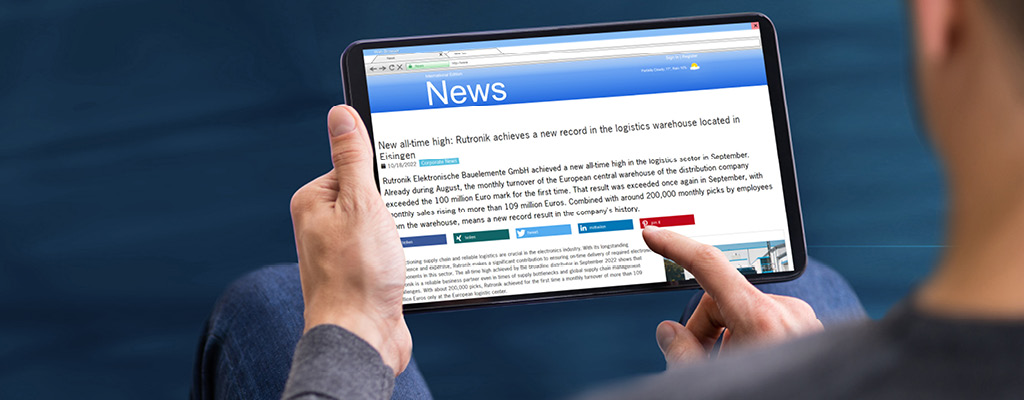Many IoT and Industry 4.0 applications use a 3V coin cell as a low-cost, reliable power supply. The problem with these, however, is that the batteries need to be changed quite frequently. A fully charged CR2032 supplies around 3.2V, but after only a few operating hours, the voltage drops to below 3V. As a result, the available energy may drop below the level required by devices such as sensors or wireless modules, causing their function or range to be heavily limited or causing disruption in transmission.
To prevent this, the <link www.rutronik24.com/category/ac-dc-dc-dc-converter/move:0/orderby:stock/qs:R-78S _blank external-link-new-window "open internal link">R-78S boost converter from Recom</link> generates a stable 3.3V supply voltage from low supply voltages of between 0.65VDC and 3.15VDC, allowing even the very last joules of energy to be squeezed out of a battery. With this plug & play switching regulator, a 1.5V battery - rechargeable or non-rechargeable - is sufficient for powering sensors, microprocessors, WLAN modules, Bluetooth modules and IoT systems for much longer than with conventional coin cells.
In a typical application using the switching regulator and a wireless module [Fig. 2], the circuit always only remains briefly active to send sensor data before switching back to sleep mode. As a result, the entire circuit consumes around 600µW for brief moments. The R-78S converter is powered by a buffer capacitor and consumes only 7µA in this state. If the capacitor charge drops below a certain limit, the circuit is briefly activated for recharging. The results:
- Reliable operation for well over 10 years with no need for maintenance
- Cost savings in batteries and maintenance
Powering Sensors in Wired Systems
The 4-20mA loop has become standard in wired systems, especially in process and control technology. In modern versions of the 4-20mA loop, data from multiple sensors is processed using a DSP and sent as a frequency-modulated burst of pulses via a single, analog cable. This is achieved using two HART modems (Highway Addressable Remote Transducer), which superimpose digital data packets on the analog signal in the transmitter and cleanly isolate them again at the receiver end [Fig. 3], allowing further sensors to be integrated without additional loop cables.
The current beneath the measurement range of 4mA can be used to draw energy, for example to power sensors. However, this energy is only sufficient for one analog sensor, not for several sensors or even smart sensors (featuring DSP and/or display) - not a problem, as long as a local power supply is available. If the sensors to be powered are located further away from the control station, however, this usually involves relatively large expenditure.
This is the reason why conventional regulator ICs are unsuitable for this task, as they are highly efficient at full load, but exceed the 4mA threshold at even low loads. In this case, not even the low quiescent currents in sleep mode can provide any help here, as the output voltage is completely shut off.
Linear regulators are also not ideal for this purpose. While their quiescent current of around 0.5mA is still acceptable, their poor efficiency means that the available power from the linear regulators is around three times less than that of switching regulators.
The <link www.rutronik24.com/search-result/qs:R420-1.8%252FPL/reset:0 _blank external-link-new-window "open internal link">R420-1.8/PL converter from Recom</link> [Fig. 4] has a shutdown current of around just 0.5mA thanks to its novel topology, even though the full rated voltage is available at the output. This means, for example, that with 24VDC and <3.5mA at the input, 3.3V/10mA is available at the output. As a result, the R420-1.8/PL converter can be used not only to supply enough energy to the microcontroller and HART modem, but also to the sensors - all without affecting the functionality of the loop or the precision of measurements in the process.
Thanks to the streamlined design of the circuit, the R420-1.8/PL converter can also be programmed with a single resistor for any output voltage between 1.8V and 5V.
Find components at <link www.rutronik24.com _blank external-link-new-window "open internal link">www.rutronik24.com</link>.


